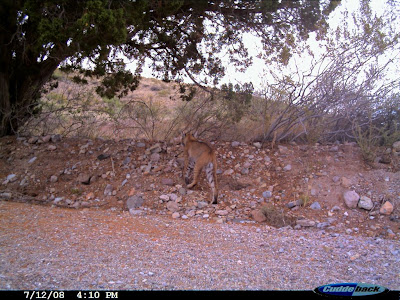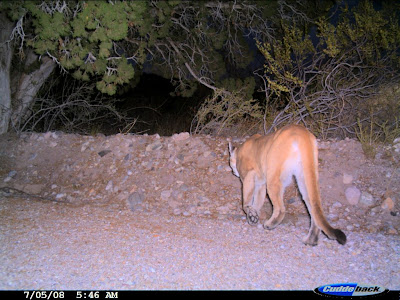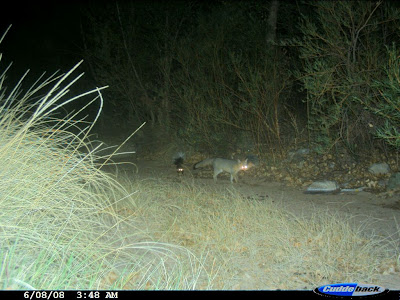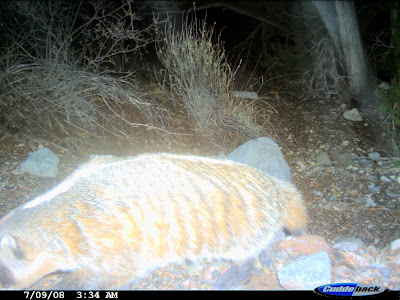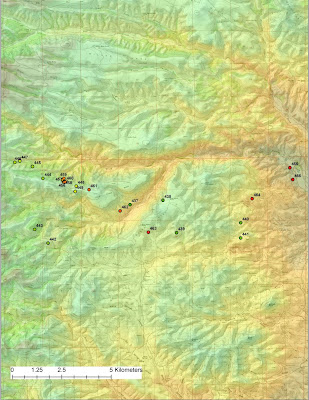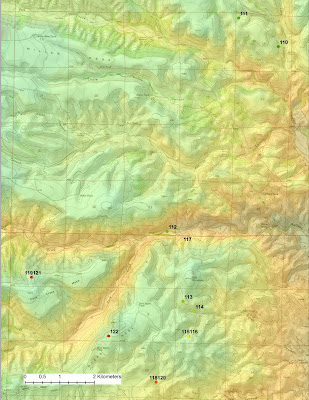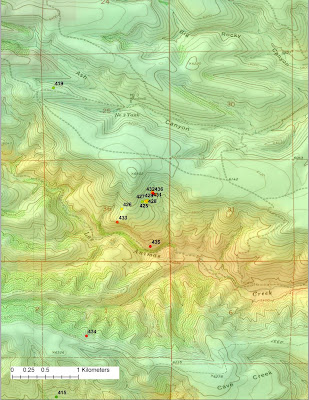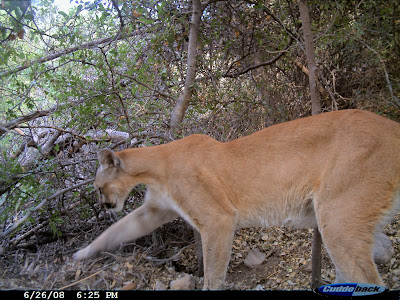
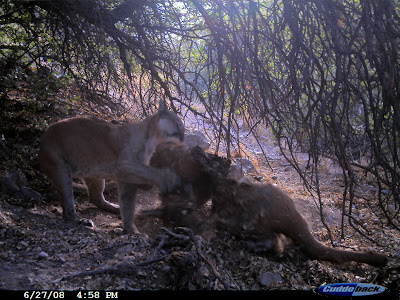
A fresh kill was found by Mike Mader on June 26th when he noticed a drag mark across the main road down Animas. I placed a camera on the site to get photos of the lion responsible. An uncollared female lion dragged this Elk calf over 200 yards before caching it under a stand of oak trees lining the road. She made the kill in the early morning of the 26th, then visited it again on the same evening when she moved the carcass to a nearby 2nd cache site. She revisited the carcass on the 27th in the early evening. On the 28th the carcass had been moved again,left uncovered, and was mostly eaten. The lion did not appear to revisit the kill after leaving it on the 27th.
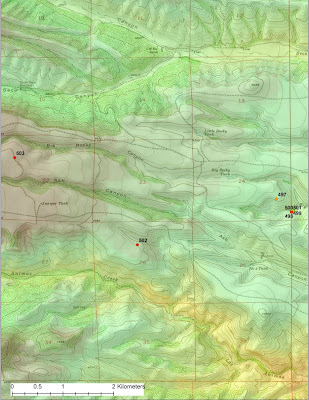 LF1 was at one location in Big Rocky Canyon from 24 July through 30 July. This is one of the longer stays in one spot we have seen. This may be a large prey item or multiple prey items. Of course, we continue to hope that we can record a litter of cubs. We have not received the last two downloads for LM1.
LF1 was at one location in Big Rocky Canyon from 24 July through 30 July. This is one of the longer stays in one spot we have seen. This may be a large prey item or multiple prey items. Of course, we continue to hope that we can record a litter of cubs. We have not received the last two downloads for LM1.
